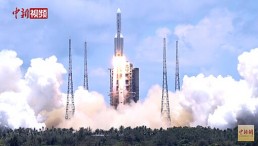Experts created a two-body system 'time crystal' that might have abilities seemingly surpassing the laws of physics. The system is usually tested and equipped to enhance the performance of futuristic quantum computers.
Through the time crystal development results, scientists believe it will be included soon in upcoming systems of wide arrays of quantum devices and even make them function in normal room temperatures.
The concept of time crystals was suggested in previous studies but is considered impossible to create. This is because the particular material should be made of atoms that exhibit perpetual motion.
First-Ever Time Crystal Now Exists

Lancaster University scholars created the first-ever time crystal. This object is a two-body system that surpasses physics as we know it. The scientists who assembled the time crystal are the same team behind the first demonstration of the interaction with a new phase of matter.
Time crystals were once thought improbable due to their structure being made of atoms containing never-ending motions. The study contrasts the idea, showing that time crystals could exist and be utilized in various applications for developing quantum devices.
Time crystals are distinct from the shiny rocks and minerals we know. For one, these normal types of crystals are composed of atoms arranged in repeating patterns in a space.
Time crystals were first conceptualized in 2012 by Nobel Laureate Frank Wilczek. These materials can maintain constant, repeating motion in time without the help of any external factors and energy input.
The atoms in time crystals perpetually spin, oscillate and displace to a direction that alters every few intervals.
Lancaster University's physics specialist and lead author of the study Samuli Autti explained in a press release that perpetual motion machines are impossible to exist. But in quantum physics, several rules could be adjusted, and taking these little disparities would let a time crystal materialize.
The team found that the construction of this technology could be perfected if two systems were initiated to work together. The model could also exist at room temperature, Autti continued.
Two-Level System Time Crystals
A two-level system is commonly used to assemble a quantum computer. With similar features, the time crystals could also be equipped to the devices and enhance their performance, Science Daily reports.
The study was made possible through the collaboration of experts from the Royal holloway London, Landau Institute, and Helsinki's Aalto University.
The team observed how the time crystal functions with the help of helium-3. This chemical is a rare isotope of the element helium with one neutron missing. The majority of the experiments were held in Aalto University's facilities.
The helium-3 superfluid was applied with an extremely low temperature of about -273.15 degrees Celsius or approximately 0.0001 Kelvin. Once the desired temperature of the material was reached, the authors assembled the time crystal inside the superfluid. Afterward, they observed the superb interaction between two-time crystal models based on the principles of quantum physics.
The study was published in Nature Communications, titled "Nonlinear two-level dynamics of quantum time crystals."
RELATED ARTICLE: Magnetar Model Simulation Demonstrates How Mysterious Fast Radio Bursts Originate
Check out more news and information on Physics in Science Times.













!['Cosmic Glitch' in Einstein's Theory of General Relativity Could Be Explained in This New Scientific Tweak [Study]](https://1721181113.rsc.cdn77.org/data/thumbs/full/53435/258/146/50/40/cosmic-glitch-in-einsteins-theory-of-general-relativity-could-be-explained-in-this-new-scientific-tweak-study.jpeg)
